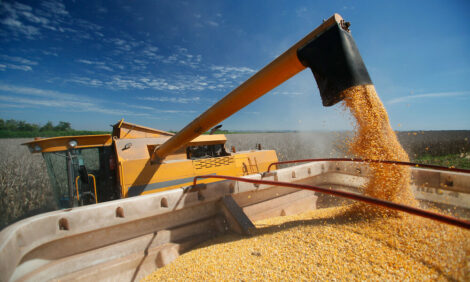



Common Sources of Foodborne Disease in UK
Campylobacter is the most common foodborne pathogen in the UK, with an estimated 280,000 cases and 40,000 foodborne illness-related GP consultations, according to the second Infectious Intestinal Disease extension study carried out for the Food Standards Agency (FSA).A significant proportion of cases of campylobacteriosis come from poultry the FSA says in its latest Annual Science Report for 2013/2014.
The report shows that an FSA survey carried out in 2007 and 2008 indicated that 65 per cent of chicken on retail sale in the UK was contaminated with Campylobacter.
An EFSA survey of Campylobacter across Europe, carried out in 2008, indicated that the UK had the sixth highest prevalence of contamination of chicken carcasses (86.3 per cent).
Campylobacter can also be found on other poultry, red meat, offal and unpasteurised milk.
Although it does not normally grow in food, it spreads easily and has been reported to have a low infective dose.
Over recent years, the number of laboratory-confirmed cases of campylobacteriosis has continued to rise.
However, provisional figures indicate a slight decrease in cases from 72,629 laboratory-confirmed cases in 2012 to 66,574 in 2013.
The FSA has welcomed the reduction but says that at present it is too early to know whether this reflects a definite trend that will be sustained or an isolated event for 2013.

Clostridium perfringens was the second most common foodborne pathogen in the IID2 extension study, with an estimated 79,000 cases and 12,700 GP consultations.
C. perfringens is not one of the five major pathogens currently monitored by the FSA, as it is difficult to determine the burden of disease.
This is because illness is usually mild and self-limiting, and under-reporting is a major issue. The number of reported cases of disease caused by C. perfringens each year is very low and the number of outbreaks reported has declined over the past five years.
Previous outbreaks of C. perfringens food poisoning were primarily the result of poor temperature control and storage of meat dishes prepared in bulk, both in catering and domestic settings.
These issues have been specifically addressed through packages such as ‘Safer Food Better Business’, ‘Cook Safe’ and the ‘Safe Catering’ pack for the catering setting, and the ‘4Cs strategy’ – which promotes the safe handling of food in the home using the 4Cs food hygiene messages, around cooking, cleaning, cooling and avoiding cross-contamination.
Norovirus was the third most common pathogen in the IID2 extension study, with an estimated 74,000 cases.
However, there are uncertainties in the proportion of norovirus cases that can be attributed to food, as there are still significant gaps in scientific knowledge.
The FSA is funding a norovirus attribution study, which ends in 2017, to address this.
Salmonella was ranked the fourth highest foodborne pathogen in the IID2 extension study with an estimated 33,100 cases. It was ranked first in terms of hospital admissions, which indicates the severity of illness due to this pathogen.
Verocytotoxin-producing Escherichia coli O157 (VTEC O157), which can also lead to serious illness, was ranked as the fifth most common pathogen in the IID2 extension study.
This study estimated that there were around 9,900 cases of foodborne VTEC O157 illness each year. However, the estimates for VTEC O157 were based on very sparse data, as this pathogen was rarely found in the main IID2 study; only one case was identified in each of the cohort and GP presentation components.
As a result, there is a very high level of uncertainty, and the estimates for this pathogen should be interpreted with extreme caution.
The IID2 extension study found that poultry was the biggest contributor to foodborne illness in the UK in 2009 with an estimated 244,000 cases.
Other significant food sources included produce, beef, lamb, seafood and eggs.
There were 1,017 laboratory-confirmed cases of E. coli O157 reported in 2013, compared with 1,253 cases reported in 2012.
The report says that Listeria monocytogenes is an unusual bacterium because it can grow at low temperatures, including refrigeration temperatures of below 5°C. It is killed by cooking food thoroughly and by pasteurisation.
Between 2000 and 2009, the annual number of laboratory-confirmed cases of listeriosis in the UK more than doubled from 116 to 234 cases.
There has been an overall decrease in laboratory-confirmed cases of listeriosis in the UK since 2009, with a decrease from 184 cases in 2012 to 177 cases in 2013.
October 2014









